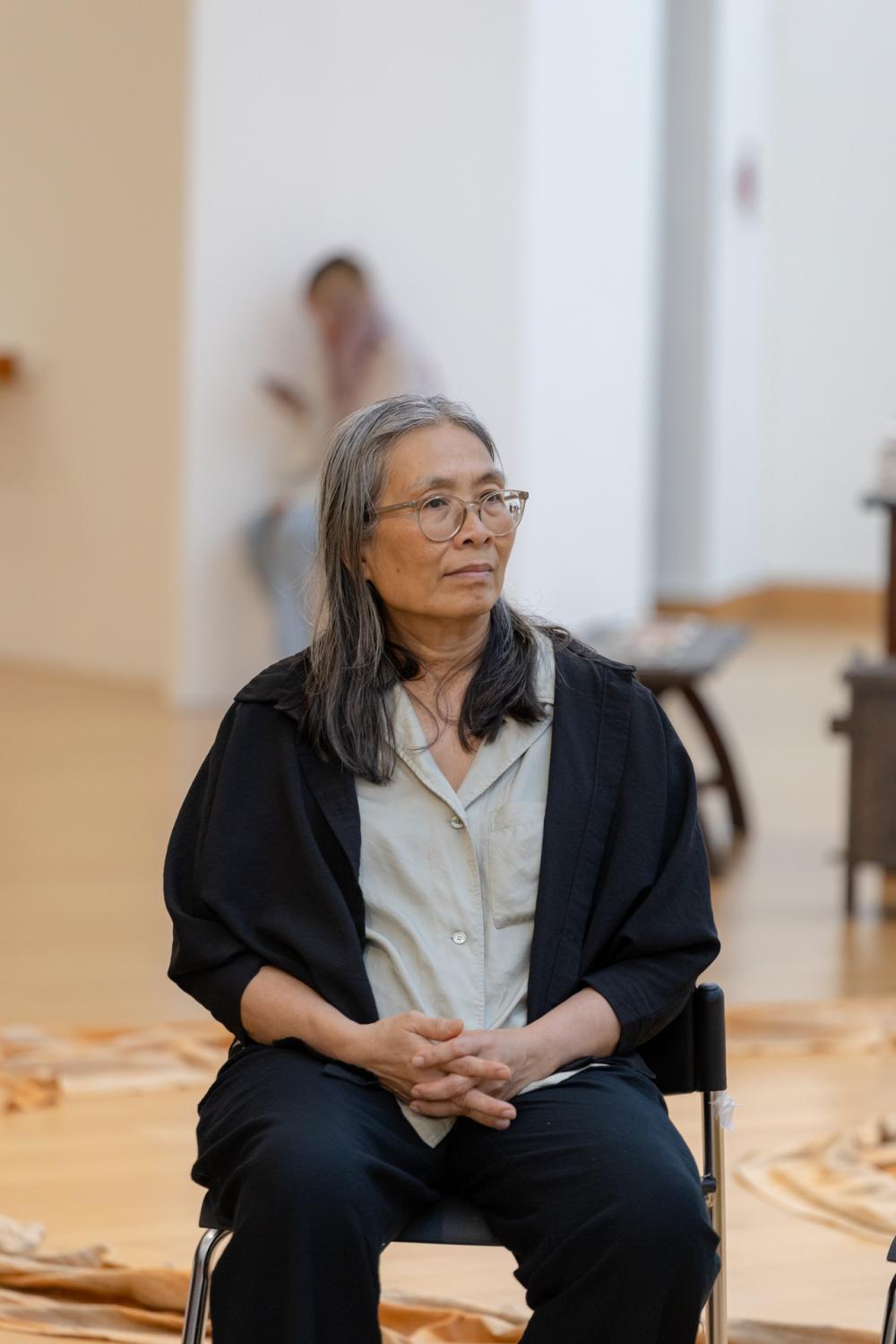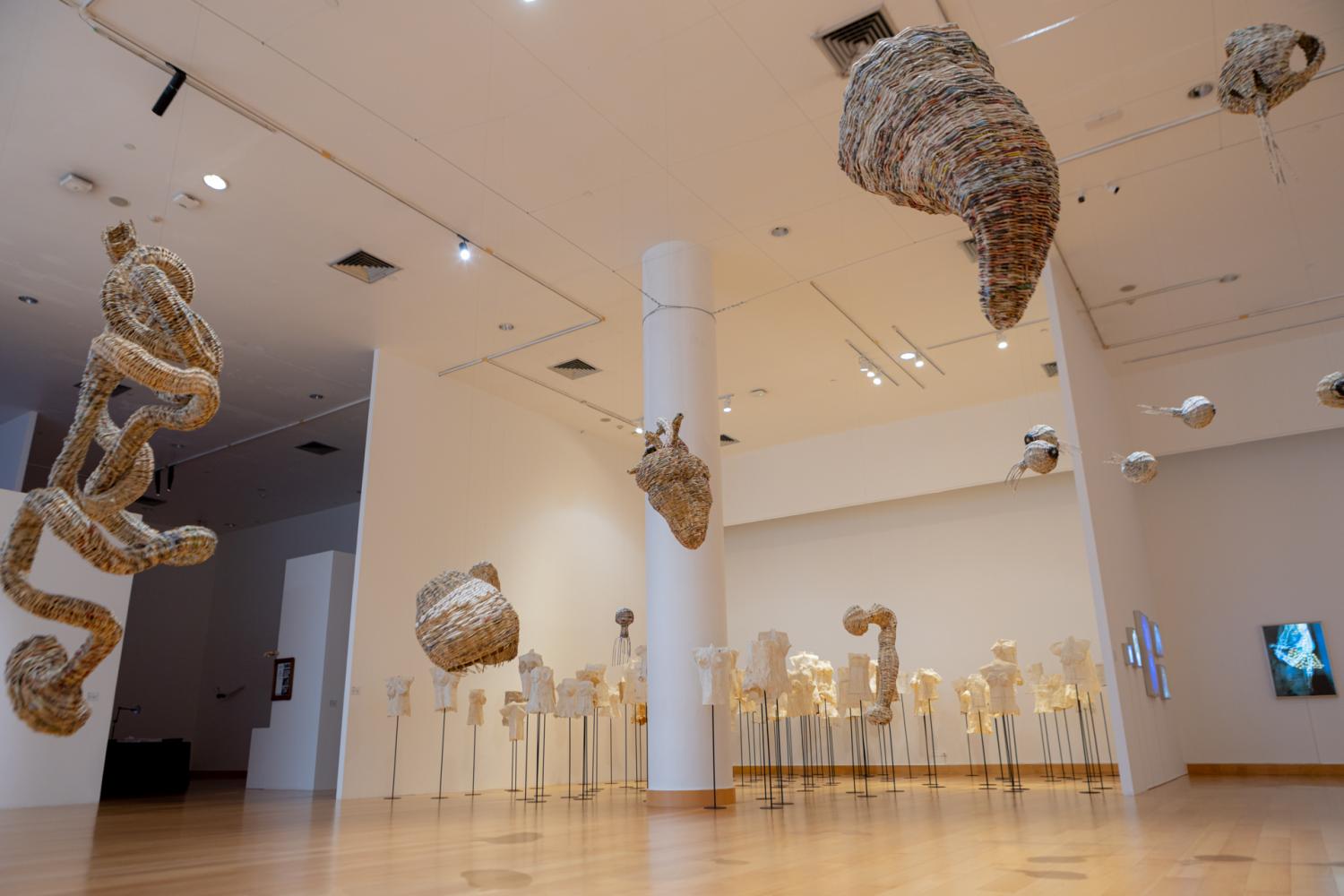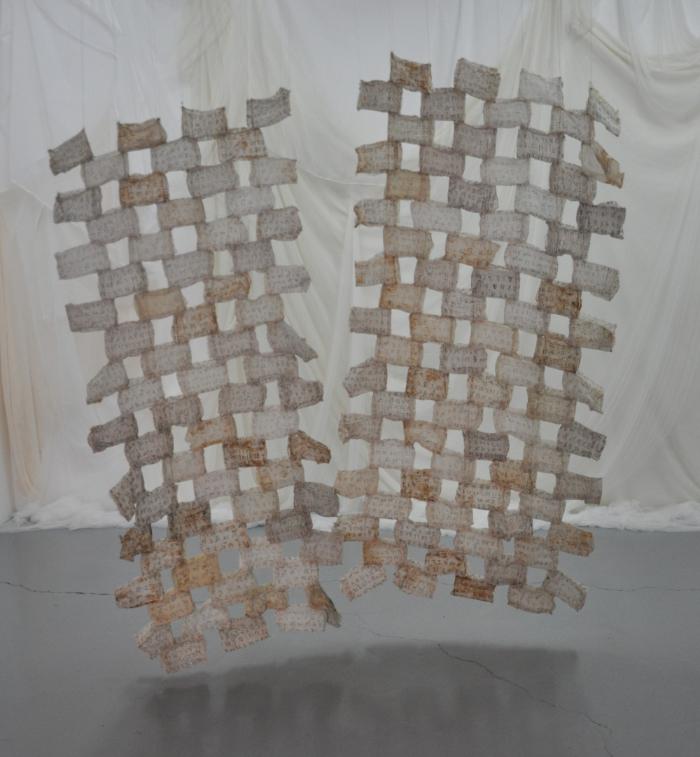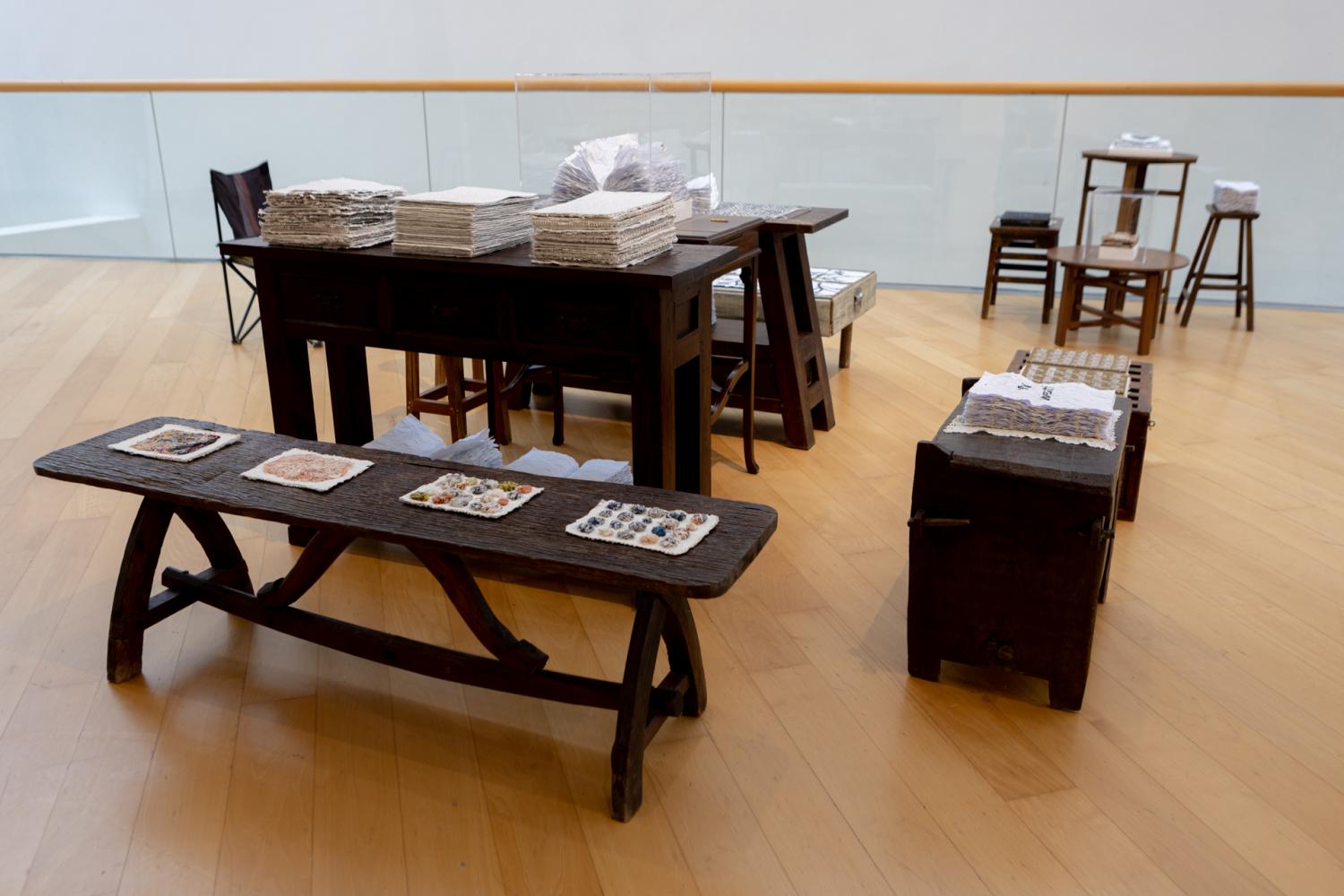During the 1990s, female artists had limited opportunities and space to showcase their work. But in 1995, a group of such women, including Jittima Pholsawek, Mink Nopparat and Phaptawan Suwannakudt, organised an exhibition titled "Tradisexion" at Concrete House.
The show was praised as a "new dimension" in the contemporary art scene. Its success led to connections between Thai and international female artists and these connections in turn led to the organisation of the Womanifesto female collective and their first show, "Womanifesto I", in 1997. Since then, the organisation holds Womanifesto as a biennale event and has expanded beyond the typical exhibition format and platform.
In collaboration with Womanifesto, Bangkok Art and Culture Centre presents the exhibition "Womanifesto: Flowing Connections", a retrospective of the group's projects from the first exhibition in 1997 until present. This exhibit showcases the work of over 30 artists, featuring pieces from past events as well as recent creations by participating artists.
Preenun Nana, who has been a part of the collective since "Womanifesto Workshop 2001", expressed gratitude for recognition given by the Bangkok Art and Culture Centre which enabled them to re-emerge in the Thai art scene.

Nitaya Ueareeworakul, a Womanifesto pioneer. jukkrit.han

Phaptawan Suwannakudt. jukkrit.han
"Womanifesto was established during a period of several projects referenced in Thailand's art history. Despite its 26-year run, the project seemed to have disappeared from the Thai scene. However, educational establishments in Japan and Scotland still mentioned Womanifesto in their lectures and symposiums," Preenun said.
The Womanifesto Workshop in 2001 was the third project following two exhibitions -- "Womanifesto I" and "Womanifesto II" (1999). The workshop was a significant event that showcased Womanifesto's ethos, which includes an emphasis on the production process, passing on knowledge and interacting with the community. The event also changed the idea that Womanifesto has to be in an exhibition format.
Held at Boon Bandarn Farm in Si Sa Ket province, the workshop was initiated after Varsha Nair, a key member of Womanifesto from India, suggested to the group they should "go picnic".
"We were discussing whether it was necessary to hold on to the exhibition format and focus on creating art pieces. We then agreed to participate in activities that allowed us to relax. At the workshop, we were told that creating artwork was not a necessity," said Preenun.
"Therefore, all the artists felt at ease and were under no pressure to create any artwork. Instead, we engaged in learning handicrafts from local craftsmen and exchanged ideas among ourselves. The workshop was later reported in a media outlet as 'No work is good work'," she added.

Varsha Nair from India. jukkrit.han
At the workshop, Karla Sachse, a German artist, was fascinated with the techniques of weaving baskets using old newspapers which she learned from a Si Sa Ket artisan. She has been developing her work using this technique for over a decade. Her latest collection at "Womanifesto: Flowing Connections" incorporates shapes and forms inspired by her body organs.
"The first piece, Female Vessel, was inspired by the stomach due to discussions about pregnancy. Karla encouraged everyone to write down their physical experiences on paper, which she later placed in Female Vessel as a memoir. When Karla stays in any country longer than 10 days, she observes if any of her organs are affected, and then weaves that particular organ," Preenun explained.
"In Vietnam, she created Weeping Vessel in the shape of eyeballs to reflect that Vietnam is still affected by the post-war era. People want to move past it, yet memories still linger in the mind's eye. When Karla was in Glasgow, Scotland, she created Digesting Vessel in the shape of intestines because she was inspired by people talking about their digestive system," she added.
Preenun and ceramist Pim Sudhikam collaborated on The Full Circle, creating clay installations which resemble leaves. They worked with local elementary and middle school students to explore herbal and medicinal plants in their village. Students shared the knowledge learned from their families by writing the information on paper and attaching it to each plant, offering educational insights to passersby.

Works by Karla Sachse, a German artist. jukkrit.han
This project used clay as a recording medium. Students imprinted clay onto leaves to preserve their forms. After the exhibition, these unfired clay imprints will be returned to their origin at Huey Din Dam in Udon Thani.
Although Womanifesto is a collective of women, it is not a feminist project. Although there are members who are feminists.
Since the project is not limited to the exhibition format only, it has developed in various other areas.
While "Procreation/Postcreation" in 2003 was launched as a publication, "NoMan's Land" was an online event in 2005. Due to their roles as mothers, daughters, sisters and wives, the biennale project experienced a long hiatus after "NoMan's Land".
"Organisers had their own responsibilities. Some had to take care of their parents or children. Typically, when family members are sick, women tend to become caretakers. Women have to sacrifice their jobs more than men. In 2008, the project resumed with the Womanifesto Residency Programme held at Boon Bandarn Farm in Si Sa Ket," said Preenun.
Gathering and exchanging ideas are important practices of Womanifesto. During the Covid-19 pandemic, the group had to cancel their planned gathering in Udon Thani. As a result, they decided that each artist should get together with whomever they could. For example, Phaptawan resided in Sydney met and talked with other artists in a park there. These gatherings developed into a "digital courtyard" called LASUEMO (Last Sunday Each Month) which allow members to meet via Zoom on the last Sunday of every month.
"Womanifesto: Flowing Connections" also features collections created by pioneers from the collective, including Phaptawan, Varsha and Nitaya Ueareeworakul. Phaptawan displays her work Building Up A Brick Wall: Rework (2010-2019), which showcases handwritten script in ink on handwoven fabrics. She learned weaving techniques from a craftswoman at Boon Bandarn Farm in Si Sa Ket province.

Building Up A Brick Wall: Rework (2010-2019) by Phaptawan Suwannakudt. Photo courtesy of Bangkok Art and Culture Centre (BACC)

Below Moment Of Truth by Varsha Nair. Apichart Jinakul
Varsha presents Moment Of Truth, displaying X-ray films to represent pain. These are combined with messages from an ancient Indian book about the principles of life which discriminates against women, as it was written by men. These messages were recreated in the form of beautiful human figures to offer a new interpretation of the principles.
Nitaya created Concern using recycled paper from an art school she had established. These papers still retain some of the text and colours, serving as a reminder of that period.
As a representative of Womanifesto, Preenun said that members do not have high expectations for the exhibition's showcase.
"We hope that the exhibition will reflect Womanifesto's ethos. It emphasises the importance of production processes, serves as an inspiration between generations, and passes on knowledge and engages with the community. Womanifesto showcases women power which embodies fluid, warm and nurturing energy. We were pleased to hear that the audience felt a glow of warm energy from the exhibition. It was one of the energies we aimed to communicate with viewers."
"Womanifesto: Flowing Connections" runs on the 8th floor of Bangkok Art and Culture Centre, until Dec 30. Admission is free. For more information, visit facebook.com/baccpage.

Above Concern by Nitaya Ueareeworakul. jukkrit.han

